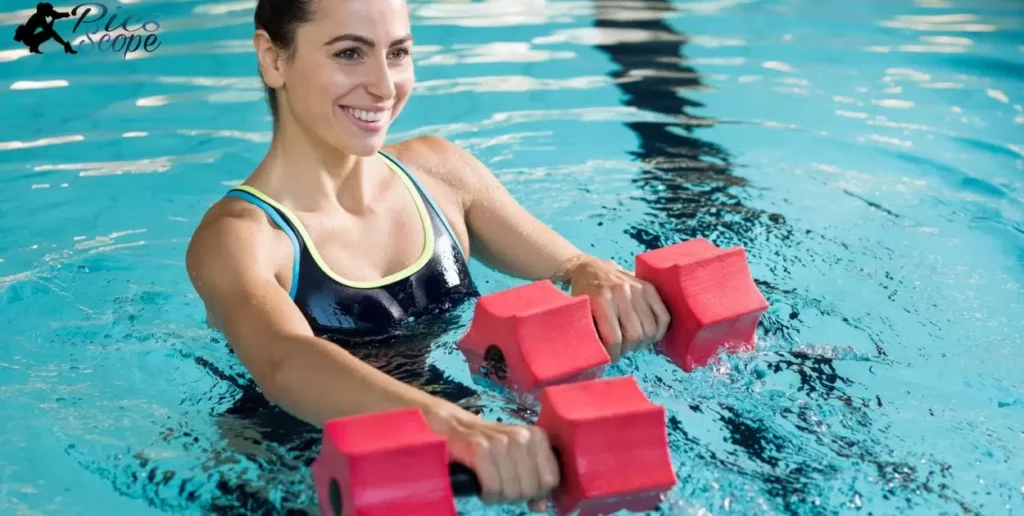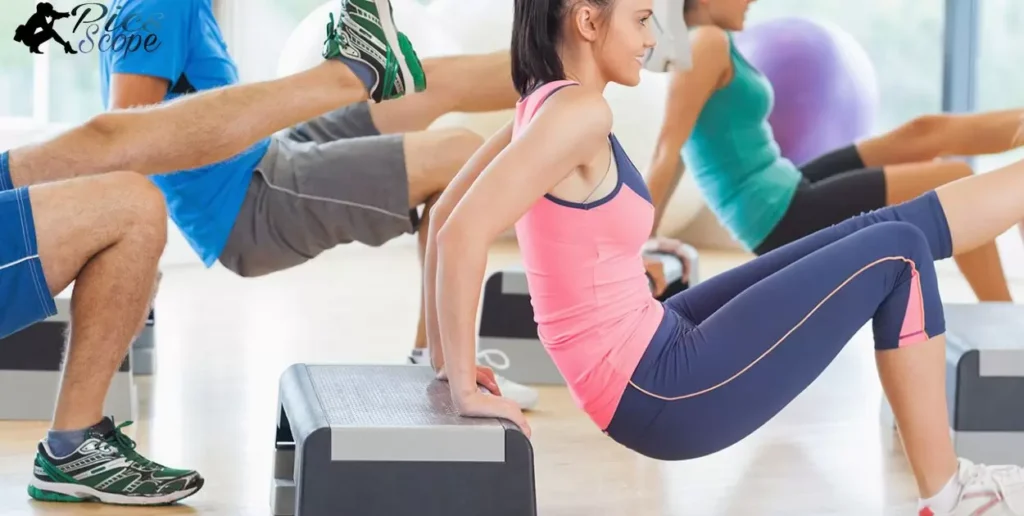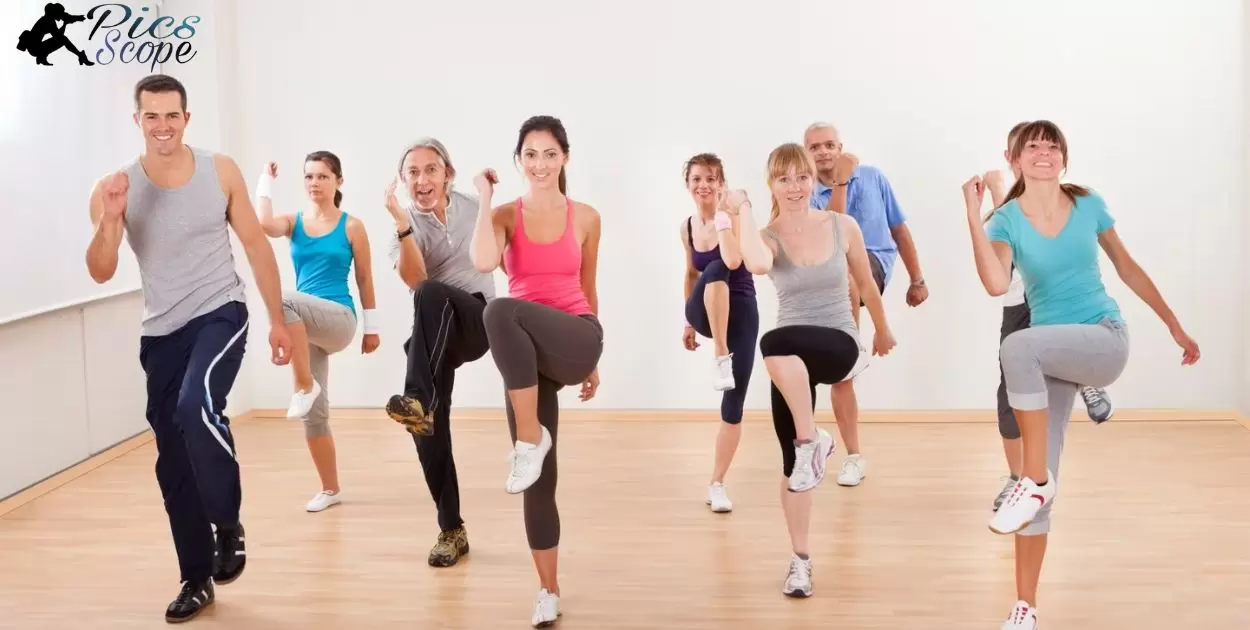Aerobic exercises are physical activities that increase your heart rate and breathing. Some aerobic exercises are jogging, swimming, cycling and dancing. They are considered the best exercises for weight loss and improved heart health.
Best Aerobic Exercises for Weight Loss and Improved Heart Health?” This is a question many people have when trying to lose weight and stay healthy. Aerobic exercise can help considerably with both goals when done regularly.
Activities like brisk walking, water aerobics and using an elliptical machine are gentle options that can still produce results over time. They get the heart pumping for an extended period without high-impact stress on joints. Increasing the duration or intensity of aerobics sessions aids in continual weight management and cardiovascular fitness.
Which Aerobic Exercises are Most Effective for Weight Loss?
Aerobic exercises that elevate your heart rate for extended periods of time are very effective for weight loss. Jogging, running, swimming and cycling are high on the list. They burn more calories compared to lower intensity exercises like walking. Choosing interval training by alternating periods of higher intensity movement with lower intensity recovery further boosts calorie burn and weight loss.
In addition to calorie burning, regular aerobic practice aids in losing weight by decreasing stress levels. Lower stress means less production of the hormone cortisol which otherwise drives fat storage in the abdomen area. Proper hydration and good nutrition provide the fuel needed for continued fat cell breakdown during aerobic sessions.
Do High Intensity Interval Training Workouts match Traditional Aerobics?
High intensity interval training (HIIT) mimics the cardiovascular benefits of traditional steady-state cardio in a more efficient time frame. Short bursts of high-energy exercise followed by recovery periods challenge the body’s systems similar to sustained moderate efforts. Some key benefits are improved endurance, heart health and faster weight management.
These shorter, discontinuous sessions may be more suitable for busy lifestyles compared to conventional 45-minute workouts. HIIT activates excess post-exercise oxygen consumption (EPOC), or the increased calorie burning long after the session ends, better than moderate activity. Proper rest between intervals allows one to exercise at maximal capacity without risking overexertion.
Is Jogging or Running Better for the Heart than Other Aerobic Exercises?
Jogging and running are excellent aerobic activities that truly get the heart pumping. They raise heart rate higher for longer than walking, swimming or cycling. Stronger cardiac function results from the demand that lower body movements place on the body’s circulatory system.
Running has no equipment requirements or costs compared to alternatives like spinning classes or gym memberships. As long as one has proper footwear, running outdoors can be done freely. Despite high-impact stress though, swimming and cycling may cause less risk of muscle strains and limb injuries over many years of practice.
What makes Cycling such a Great Aerobic Exercise?
Cycling is a low-impact, full-body cardiovascular workout. Using large muscle groups in the lower body and core, cycling maintains an elevated heart rate for prolonged periods. The repeating cycling motion provides an efficient aerobic exercise without spike impacts to hips or knees.
Cyclists can enjoy scenic views or listen to entertainment while getting aerobic benefits indoors too. Stationary bikes offer many adjustments to riding position and resistance levels for varying ability and training goals. Built-in programs help guide interval training or endurance rides for optimized calorie burn and fitness results.
How does Swimming maximize the benefits of Aquatic Aerobic Exercises?

Swimming exercises the entire body without weight-bearing stress on joints and discs. Water’s resistance builds strength while supporting the body. Swimming improves endurance and metabolism with its full-body, sustained rhythm. Alternative strokes recruit different muscles for cross-training advantages.
The cooling effect of water also allows intense efforts safely without overheating risks. Outdoor laps allow swimming year-round, weather-permitting. Form focuses on efficiency and technique rather than speed for low-impact benefits. Drag suits or flippers add adjustable resistance training components to routines.
Are Dancing Styles like Zumba good Full-body Cardio Exercises?
Zumba and other dance-inspired exercise classes blend upbeat music with choreographed movements like salsa, samba and hip-hop. Participants don’t realize they’re engaged in vigorous aerobic activity while dancing. Dance styles change regularly so the body never gets used to repetitive motions either.
The social, fun aspect of group dancing helps adherence compared to solo workouts. Instructors motivate individuals of varied abilities via energetic cues. Classes are calibrated for calorie burning, with some burning over 500 calories in just one hour session! Dance may not build significant muscular strength but provides quality full-body cardio.
Can Strength and Aerobic Exercise be Combined for Better Fitness Results?
Both strength and cardiovascular components are important for complete physical and heart health. Pairing them in the same session is efficient and effective. Aerobic exercises can follow a short strength segment to raise the heart rate into the target zone for an extended calorie burn period.
Alternating between cardio and strength segments introduces variety into workouts to prevent boredom. Combining modalities challenges the body more than singular focus. Muscle breakdown from strength work elevates calorie usage even at rest. Greater calorie output and well-rounded conditioning result from comprehensive training combining the benefits of anaerobic and aerobic exercise efforts..
Why is Walking such an Accessible and Low-impact Aerobic Exercise?
Walking is one of the simplest forms of exercise that most people can enjoy, regardless of their physical abilities or access to special equipment. All it requires is a comfortable pair of shoes to get moving and experience the cardiovascular benefits of this full-body workout.
| Location | Surface | Equipment |
| Neighborhood streets | Paved roads | Walking shoes |
| City parks | Grass paths | Comfortable clothing |
| Indoor track | Rubber/wood | Sweat-wicking layers |
| Shopping mall | Hard floors | Hat/visor, sunscreen |
| Treadmill | Moving belt | Headphones for music |
| Nature trails | Variable terrain | Water bottle, pocket for phone |
Does the Equipment used for Indoor Aerobics match Outdoor Activities?
Indoor stationary bikes, elliptical machines, treadmills and more simulate common outdoor aerobic options within the convenience of any weather conditions. Adjustable incline, resistance and program features match various terrain challenges. Built-in monitors provide guidance and feedback on performance metrics.
Health clubs offer a variety of quality equipment in one location alongside group classes for social motivation. Home gym investments can replicate outdoors, but higher initial costs. Apps now allow following virtual outdoor routes or trainer-led sessions from any treadmill or bike too. Though lacking nature’s views, controlled indoor environments suit year-round personalized aerobic routine consistency.
What Intensity and Duration is Required for Significant Fat Burning?
The American Heart Association recommends at least 150 minutes per week of moderate intensity aerobic activity or 75 minutes of vigorous exercise to support health and manage weight. However, longer duration at moderate output burns more total calories including greater fat calories.
Aim for 30-60 minutes per session combining moderate and higher efforts. Realize every movement counts – multiple 10 minute walks add up. Tracking heart rate with a monitor confirms intensity level. Interval training packs efficient calorie burn into shorter sessions by alternating burst efforts with recovery periods for focused fat target zones twice weekly.
Which Group Exercise Classes provide the Best Heart-healthy Aerobics?
Group exercise motivates attendees to push themselves harder than solo workouts. Zumba, cycling, kickboxing and step aerobics are my favorite high-energy dance and strength-based routines. Water aerobics classes relieve joint pressure while raising heart rate through choreography.
Yoga classes employ controlled breathing to boost cardiovascular endurance along with meditation’s stress-relieving effects. Outdoor bootcamps maximize calorie burn by adding bodyweight circuits and intervals to scenic nature walks. Personal trainers provide expertise and encouragement especially for beginners learning new aerobic techniques in supportive class settings.
How Effective are Yoga and Pilates as Low-impact Aerobic Workouts?
Yoga and Pilates can provide notable aerobic benefits with minimal joint stress. Sustaining certain poses elevates heartbeat through engaged breathing. Fluid transitions challenge balance and stability besides flexibility. Varied routines excite different muscle contractions across full sessions.
Regular practice strengthens the respiratory and cardiac systems. Controlled breathing exercises oxygenation to working muscles. Low-impact benefits accommodate injury recovery periods or those excluded from high-exertion activities. Mental and physical gains complement an overall healthy lifestyle.
What is the Most Enjoyable way to add Variety to an Aerobic Routine?

Enjoyment fuels long-term routine consistency. Incorporating different activity types, locations, intensities and companions prevents boredom. Interval training packs multiple modalities into one efficient session.
Group exercise classes offer built-in diversions. Apps schedule distinct daily plans preventing routine complacency. Outdoor activities like hiking combine nature appreciation inspiring continued participation. Periodic fitness challenges introduce fresh goals keeping workouts motivating.
How does Exercise Adherence improve with Accountability and Goal Setting?
Goal setting and accountability are important factors for sticking to an exercise routine over the long term. By writing down specific aims and sharing them with others, people are more likely to follow through on their fitness plans regularly. Tracking progress against objectives helps drive continued participation and improvements.
| Goal Type | Example |
| Duration | Work out 30 minutes per session, 3 times a week |
| Intensity | Raise average heart rate to 130 BPM during cardio |
| Distance | Run 2 miles continuously outdoors |
| Flexibility | Stretch hamstrings daily holding each pose for 30 seconds |
| Strength | Complete 2 sets of 10 push ups with good form |
| Nutrition | Drink 64oz of water daily and track protein intake |
| Lifestyle | Take the stairs instead of elevators whenever possible |
Which Community or Gym Programs support Long-term Aerobic Commitment?
Team events like charity walks present time-bound, meaningful missions. Gym programs offer structured progression towards certificates. Group personal training packages support aerobic development together.
Community recreation departments schedule various outdoor programs through seasons. Fitness challenges against others foster competition. Instructional courses teach new energizing skills or workout types. Commitment to continual learning inspires long-term health maintenance.
Do Motivational Playlists and Videos enhance Home Aerobic Workouts?
Carefully crafted music selections inspire moods for elevated work capacity. Upbeat tempos synchronize body movements increasing calorie output. Lyrics coach routines through motivational lyrics.
Instructional videos teach efficient technique preventing injury while energizing routines. Trainer-led sessions deliver workouts of various intensities and styles within homes. Visual motivation and verbal cues sustain efforts where self-directed. Entertainment distracts from discomfort extending time under target heart rate.
What Warm-ups and Cool-downs optimize Aerobic Workout Safety?
Gradual warm-ups prepare the body for exertion through light movements and stretching. Dynamic warm-ups with higher output periods ready cardiovascular and pulmonary systems. Static stretches after cooling down musculature prevent next day soreness from abrupt exertion decreases.
Proper warm-ups minimize injury risk from sudden intense activity. Cool-downs allow gradual heart rate descent preventing dizziness. Flexibility gains accompany aerobic benefits through full routines bracketed by purposeful non-strenuous segments.
How does Proper Nutrition complement a Cardiovascular Exercise Regimen?
Balanced macronutrients fuels cardiovascular sessions while replenishing afterwards. Increased water prevents dehydration especially in warmer months. Appropriate minerals offset electrolyte losses from sweat.
Nutrient-dense whole foods supply sustained energy. Meal timing affects absorption for workouts. Post-exercise protein aids muscle recovery. Moderate portions align with output supporting healthy weight management complementing aerobic goals.
What Recovery Strategies Prevent Aerobic Exercise-related Injuries?
Stretching after each cooldown maintains pliability protecting from strains. Rest allows repairing micro-tears and strengthening muscles. Ice soothes soreness while reducing swelling. Compression garments speed recovery.
Cross-training days substitute low-impact options preventing overuse. Footwear correct fitting cushions impact. Joint-friendly surfaces choose when practical. Proper form technique prevents associated repetitive stress injuries. Overall balance supports injury-free lifelong participation.
How can Aerobic Progress and Success be Defined and Tracked Over Time?

Goal-based progression like increased duration, distance or intensity document improvements. Periodic fitness tests chart enhanced cardio endurance objectively. Weight, measurements and photos capture multi-faceted transformations.
Monitoring workload and heart rate data through wearable tech profiles aerobic fitness quantitatively. Rating scales qualify subjective sensations helping design personalized programs. Regular logs alongside goals illustrate victories for continued motivation achieving lifelong well-being.
FAQ’s
What are some examples of aerobic activities?
Aerobic activities include running, swimming, cycling, dancing, and jumping rope.
Which aerobic exercise is considered the most effective?
High-intensity interval training (HIIT) is often considered the most effective aerobic exercise for fitness and fat burning.
What constitutes a basic aerobic exercise?
Brisk walking is a simple yet effective basic aerobic exercise suitable for individuals at various fitness levels.
Can you name five types of aerobics?
Common types of aerobics include step aerobics, water aerobics, dance aerobics, kickboxing, and Zumba.
Conclusion
Aerobic exercises provide numerous health benefits when done regularly. They help strengthen the heart and improve cardiovascular fitness. Getting at least 30 minutes per day of activities like walking, swimming, dancing or cycling can effectively raise your heart rate. This lowers risks of chronic diseases and helps manage weight.
Overall, making aerobic exercises part of a weekly routine can boost both physical and mental well-being. Choose options you enjoy to stay consistent in your workouts. Vary your activities to target different muscle groups. Most importantly, remember to warm-up and cool-down properly to prevent injuries. With regular practice, you will reap the rewards of improved heart health and higher energy levels.







